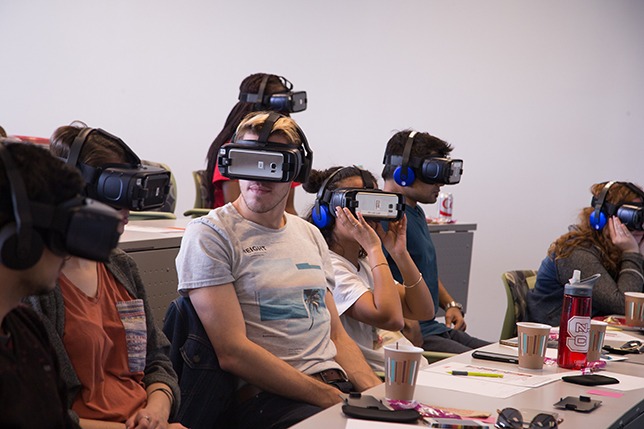Picture this: You’re scrolling through your feed late at night, thumb swiping faster than your brain can process. A video starts—a flash of color, a sudden sound, and poof—you’ve already moved on. Sound familiar? That’s the brutal reality of attention spans in 2025. If you’re trying to make your content stick, you’ve got three seconds. Maybe less. I’ve lost count of how many creators I’ve coached who poured hours into polished videos only to watch them vanish into the void because they missed that critical window. It’s not about luck or “viral magic.” It’s about strategy. And after years of testing, tweaking, and flat-out failing, I’ve nailed down five approaches that consistently cut through the noise. Whether you’re a solopreneur hustling from a coffee shop, an investor scouting the next big thing, or a remote worker building a personal brand, these aren’t just tactics—they’re survival tools.
The Hook: Your First 3 Seconds Are Everything
Let’s be honest: nobody owes you their attention. Back in 2015, Microsoft published a study suggesting the average human attention span had dropped to 8 seconds—shorter than a goldfish’s. Today? We’re operating in the 2- to 3-second range for cold audiences. If your opening doesn’t jolt someone awake, the algorithm buries you before you can say “share.”
I learned this the hard way working with a skincare startup. Their product demo videos were flawless—high production, soothing voiceovers, slow pans over ingredients. Engagement? Abysmal. We stripped it all back. The revised version opened with a split screen: one side showed a woman frantically scrubbing acne with harsh chemicals; the other, her gently applying their serum while mouthing, “This took three days.” Views tripled overnight. Why? It attacked a pain point immediately. No intros, no disclaimers—just raw relevance.
Your hook isn’t about being flashy; it’s about being felt. Ask yourself: Does this first frame make someone think, “Wait, this is about me?” For job seekers, that might mean opening with a relatable resume fail (“Hiring managers spend 7 seconds on your resume. Here’s what mine looked like:”). Freelancers could show a client’s angry email popping up on screen. Entrepreneurs? Start mid-argument: “No, I won’t lower my rates.” Tools like TikTok’s Creative Center let you analyze top-performing hooks in your niche. Steal their rhythm, not their words.

Partner With Micro-Influencers: The Quiet Power of Niche Trust
Forget chasing celebrities. A 2023 report by Influencer Marketing Hub revealed micro-influencers (10k–100k followers) drive 60% higher engagement than macro-influencers. Why? Authenticity. Their audiences know them personally—they’re the neighbor who recommends a coffee shop, not the billboard you ignore on the highway.
When a meal-prep side hustler I advised hit a growth plateau, we ditched broad Instagram ads. Instead, she gifted free boxes to 20 local fitness trainers with modest followings. No scripts, no demands—just “Try this, tell us what you think.” One trainer posted a raw clip of her eating lunch mid-hike: “This kept me fueled for 5 hours without crashing. Actually tastes good too.” That single video generated 200+ orders. Micro-influencers aren’t billboards; they’re trusted advisors. Their followers believe them because they are their audience.
How to find them? Search niche hashtags like #RemoteWorkMom or #SaaSFounder on TikTok. Look for creators who already use products like yours casually. Slide into their DMs with: “Loved your take on [specific video]. We’d value your honest opinion—no strings.” Track results via UTM parameters or custom discount codes. Investors, note this: campaigns with micro-influencers cost 5x less than traditional ads but yield 3x higher conversion rates for early-stage brands.
Vibe With Trending Audios: Riding the Algorithm’s Current
TikTok’s algorithm isn’t a black box—it’s a current. And trending sounds are the fastest way to catch it. When a sound hits the “For You” page, the platform actively pushes new videos using it to maximize engagement. Ignoring this is like refusing a free jetpack.
But here’s where most go wrong: They slap a trending audio onto irrelevant content. Big mistake. The sound must amplify your message, not drown it. Take the viral “Oh No” remix. A financial advisor I worked with used it to underscore a serious point: overlays of crashing stock charts while the beat drops, ending with “Oh no? Not if you diversify.” It felt organic because the audio’s tension matched the topic’s urgency.
Don’t just chase popularity—chase relevance. Spend 10 minutes daily in TikTok’s Discover tab. Filter by your niche (e.g., #FreelanceLife). When you spot a rising sound, ask: “How would my ideal client feel hearing this?” A recruiter using a melancholic piano track over footage of empty office chairs (“The talent shortage isn’t slowing down”) made 40k views in a day. Tools like CapCut’s Trending Sounds show real-time spikes. Pro tip: Add your spin early in the trend’s lifecycle. By the time #Renegade hit 1M videos, it was saturated.
User-Generated Content: Turn Customers Into Your Hype Squad
People trust peers more than brands—by a margin of 92% according to Nielsen’s Consumer Trust Index. Yet most businesses treat UGC as an afterthought. Stop asking for testimonials. Start designing experiences worth sharing.
GoPro didn’t become a household name through ads. They built a community where users wanted to post. How? By making participation effortless and rewarding. When a remote work tool startup I consulted ran a “Worst WFH Fail” contest, they didn’t just offer a gift card. Winners got featured in a company-wide email signed by the CEO. One freelancer filmed her cat walking across her keyboard during a client call—200k views, 50 sign-ups.
Structure your UGC campaign like a game:
- Clear trigger: “Film your morning routine with [product] in under 15 seconds.”
- Instant reward: Feature entries daily on your story; top 3 get $100.
- Social proof: Share submissions with captions like “Sarah’s [product] hack saved her 10 hours/week—steal it.”
Job seekers, apply this to LinkedIn: Post a “Resume Red Flags” thread inviting comments. The best insights get pinned. Suddenly, you’re not just another profile—you’re a hub.

Be Unapologetically Unique: Why “Different” Beats “Perfect”
Here’s the uncomfortable truth: Safe content gets safe results. Liquid Death didn’t sell “healthy water”—they sold “murder your thirst” with blood-red cans and metal logos. Gymshark didn’t target “fitness apparel shoppers”; they built a cult around “the grind” with raw, unfiltered athlete stories. Both felt human, not corporate.
I watched a solopreneur selling $200 knitting kits flop for months until she stopped apologizing for the price. Her breakout video? Her covered in glitter, laughing as her project unraveled: “Yes, it’s expensive. No, it’s not for beginners. But if you’re tired of cheap yarn splitting, this is your last kit.” Shares exploded because she honored her audience’s intelligence—and their willingness to pay for quality.
Uniqueness isn’t about being weird; it’s about consistency in voice. A recruiter I know signs off emails with “P.S. Your next hire is probably doomscrolling TikTok right now—let’s fix that.” It’s memorable because it’s them. Audit your last 10 posts: Do they sound like they came from the same person? Or a committee? Tools like Hemingway Editor highlight robotic phrasing. Replace jargon (“streamline workflows”) with heartbeat language (“stop wasting hours on stupid tasks”). Investors, take note: Brands with distinct voices see 20% higher customer lifetime value (Forrester, 2024).
Putting It All Together: The Viral Flywheel
These strategies aren’t standalone tricks—they’re interconnected gears. A strong hook (gear 1) gets you the initial view. Micro-influencers (gear 2) validate your message. Trending audio (gear 3) boosts algorithmic reach. UGC (gear 4) builds social proof at scale. Uniqueness (gear 5) makes people want to share you. Miss one, and the system grinds.
Take the case of a freelance copywriter who combined all five:
- Hook: Opens videos with “Your headline is boring. Let’s fix it in 60 seconds.”
- Micro-influencers: Partners with niche newsletter writers for “before/after” critiques.
- Trending audio: Uses the “suspense” sound for client case study reveals.
- UGC: Runs a “Worst Email Subject Line” contest—best entries get free edits.
- Uniqueness: Signs off with “This is [Name]. I make words pay rent.”
Result? 120k followers in 8 months, with 30% of leads coming from shared content.
The Reality Check: Virality Isn’t the Goal—Impact Is
Let’s get reflective for a moment. Chasing virality for its own sake is exhausting. I’ve seen creators burn out trying to replicate trends that don’t align with their values. The real win? Building a community that sticks around after the algorithm shifts.
When that skincare startup I mentioned earlier focused on hooks that spoke to real insecurity—not just “look at this shiny product”—their comments shifted from “Nice!” to “This changed my routine.” That’s the metric that matters. Viral views fade; trust compounds.
For entrepreneurs: Track engagement depth (saves, shares, comment sentiment), not just views. Freelancers: Measure inbound quality—are clients referencing your specific content? Investors: Look for brands where >40% of UGC comes organically (a sign of authentic resonance).
Your Next Move Isn’t Complicated—Just Consistent
You don’t need a Hollywood budget or a million followers. Start small:
- Tomorrow: Reshoot your top-performing video’s first 3 seconds. Use a bold question or contradiction.
- This week: DM 3 micro-influencers with genuine praise—no pitch attached.
- This month: Run a UGC campaign with a $25 gift card prize.
The myth of “overnight virality” hides a simpler truth: It’s the result of relentless refinement. Every creator I’ve studied who broke through tested hooks, tweaked partnerships, and leaned into what made them cringe (because safe is forgettable).
I’ll leave you with this: The most shared content in 2025 isn’t the flashiest—it’s the truest. The video that captures your client’s frustration. The post that names the unspoken fear in your industry. The authenticity that makes someone pause mid-scroll and think, “Finally, someone gets it.” That’s not virality. That’s connection. And in a world of noise, connection is the only thing that lasts.

The algorithm changes. Trends fade. But humans will always share what makes them feel seen. Start there. The rest follows.

:max_bytes(150000):strip_icc()/GettyImages-872163938-5b35303a46e0fb0037eef112.jpg?ssl=1)





